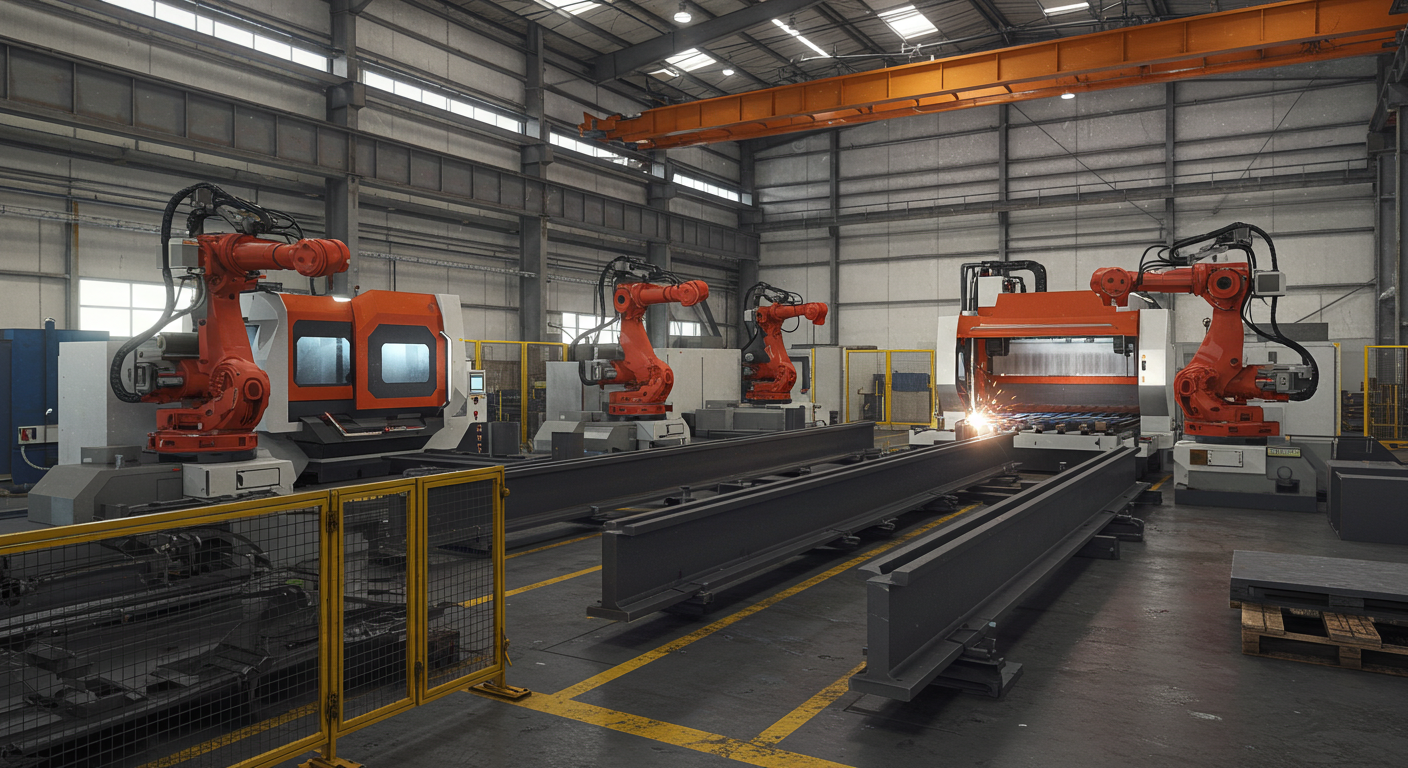Steel construction systems, which are preferred in many areas from industrial buildings to high-rise buildings, from factory roofs to platforms carrying heavy loads, are indispensable building elements of modern constructions with the advantage of durability and lightness. The modernisation of the techniques used in the production of these systems directly affects both production time and structural safety.Why Steel Construction?
Why Steel Construction?
Steel construction offers many advantages over traditional reinforced concrete structures with its fast erection, durability and design flexibility:
- Earthquake resistant building systems
- Lighter but stronger load-bearing elements
- Ease of use in high-rise and wide-span structures
- Use of long-lasting and environmentally friendly materials
Providing these advantages effectively in the field depends on the technological infrastructure in the production process.
Stages of Modern Production Processes
1. Design and Engineering Modelling
The steel construction production process starts primarily in the digital environment. Tekla Structures, AutoCAD, SolidWorks carrier systems are modelled and static calculations are made thanks to software such as.
Bayrakcı Metal provides 3D modelling support in accordance with project demands and develops the most suitable solutions in terms of engineering.
? Project Department you can see the design support process.
2. Automatic Cutting and Perforating Technologies
Traditional cutting methods are both error prone and time consuming. Used in modern steel manufacturing CNC machines, laser cutting, plasma cutting and automatic hole opening systemsIt provides both speed and quality advantage by working with millimetre precision.
? Thanks to laser cutting technologies, the error rate can be reduced below %0.1.
3. Preparation before welding and assembly
After the steel elements are produced, the joining stage is started. Robotic welding systemsminimises welding defects. At the same time, the weld quality is verified by ultrasonic tests.
Bayrakcı Metal applies part-based quality control after each welding process.
? Manufacturing Processes You can examine the welding and assembly preparations from the page.
4. Surface Protection and Galvanising
The risk of corrosion is of great importance for steel structures to be used in open areas. For this reason
- Hot dip galvanised
- Epoxy primer coating
- Powder coating applications
such methods are used. In this way, the life of steel structures can be up to 50 years
4. Welding and Assembly Applications
Correct welding directly affects the strength of the structure. All welds are then tested by the quality control team.
? Manufacturing Processes Discover more about the new generation.
5. Control and Certification Process
The last link in the production process is quality control and certification. All steel parts are subjected to post-production tests. These tests include:
- Measurement and tolerance tests
- Mechanical endurance tests
- Source integrity analysis
- Protective coating thickness measurements
takes place. Bayrakcı Metal documents these processes and provides transparent production reports to its customers.
? Control Processes You can get detailed information about.
Benefits of Modern Production
| Traditional Method | Modern Method |
|---|
| Manual cutting and welding | CNC + Robotic production |
| High error rate | Millimetre accuracy |
| Long production time | Fast and planned production |
| Manual measurement | Digital quality control systems |
Conclusion: Buildings of the Future are Built with Modern Production
Quality in steel construction production starts not only in the final product but also in all production processes. As Bayrakcı Metal, we build your projects safely with modern software, automation-supported production systems and our expert technical staff.
"Accurate engineering, robust manufacturing and safe assembly."




